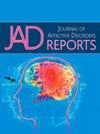Development and psychometric validation of the Italian version of the Wender-Reimherr Adult Attention Deficit Disorder Scale (WRAADDS)
Q3 Psychology
引用次数: 0
Abstract
Background and Objectives
In this study we developed and validated the Italian version of the Wender-Reimherr Adult Attention Deficit Disorder Scale (WRAADDS), a clinician-rated scale for attention-deficit/hyperactivity disorder (ADHD) in adults. It assesses both observable behavior and subjective experiences and is tailored to address clinical features more directly relevant to adults with the disorder.
Methods
50 participants were recruited, including 32 referred to the Psychiatry Unit 2 at Pisa University Hospital, and 18 recruited through snowball sampling. 25 were diagnosed with ADHD, 15 with other psychiatric conditions, and 10 were healthy controls. All participants were evaluated using the WRAADDS and a set of clinician-rated, informant-rated and self-rated instruments. Psychometric characteristics of the WRAADDS were assessed, including inter-rater reliability and internal consistency, as well as concurrent and criterion validity.
Discussion
The WRAADDS total and composite domains score showed excellent inter-rater reliability (Spearman's r ≥ 0.815; N = 17) and internal consistency (Cronbach's α ≥ 0.88). Concurrent validity was supported by correlations with measures of inattention, hyperactivity/impulsivity, and emotional dysregulation (r ≥ 0.6). Patients with ADHD scored significantly higher than the other participants on several WRAADDS scores and an ADHD composite score ≥ 8 distinguished patients with ADHD with accuracy = 88 %, sensitivity = 92 %, and specificity = 84 %. In conclusion, the Italian version of the WRAADDS is a valid assessment tool for adult ADHD, facilitating a comprehensive understanding of the disorder within the adult population.
意大利版成人注意缺陷障碍量表(wraadd)的编制与心理测量学验证
背景与目的在本研究中,我们开发并验证了意大利版的温德-赖默成人注意缺陷障碍量表(wraadd),这是一种临床评定的成人注意缺陷/多动障碍(ADHD)量表。它评估可观察到的行为和主观体验,并针对与成人障碍更直接相关的临床特征进行定制。方法招募50名受试者,其中32名转诊至比萨大学医院精神病学第二科,18名通过滚雪球抽样招募。其中25人被诊断患有多动症,15人患有其他精神疾病,10人是健康对照组。所有参与者都使用wraadd和一套临床评定、举报人评定和自评定的工具进行评估。评估wraadd的心理测量特征,包括量表间信度和内部一致性,以及并发效度和标准效度。wraads总域和复合域评分具有良好的量表间信度(Spearman’s r≥0.815;N = 17)和内部一致性(Cronbach’s α≥0.88)。同时效度与注意力不集中、多动/冲动和情绪失调的测量值相关(r≥0.6)。ADHD患者在几个wraadd得分上明显高于其他参与者,ADHD综合得分≥8分区分ADHD患者的准确性= 88%,敏感性= 92%,特异性= 84%。总之,意大利版的wraadd是成人ADHD的有效评估工具,有助于全面了解成人人群中的这种疾病。
本文章由计算机程序翻译,如有差异,请以英文原文为准。
求助全文
约1分钟内获得全文
求助全文
来源期刊

Journal of Affective Disorders Reports
Psychology-Clinical Psychology
CiteScore
3.80
自引率
0.00%
发文量
137
审稿时长
134 days
 求助内容:
求助内容: 应助结果提醒方式:
应助结果提醒方式:


